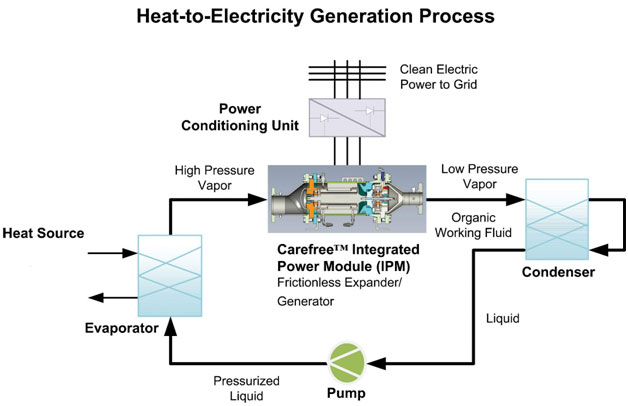The Rankine Cycle was named after William J. M. Rankine, a Scottish engineer and physicist who developed the theory of the steam engine in 1859. The steam production process for heating has been around for thousands of years, and in the 17th and 18th century, the development of the steam power cycle began. These developments lead to the steam engine and the Industrial Revolution, which vastly changed human life.
The Organic Rankine Cycle (ORC) is similar to a steam cycle, except that it uses an organic fluid in place of water. ORC is a heat recovery process that converts thermal energy into mechanical power. The process begins with an organic working fluid that is pumped through an evaporator, exposing it to a heat source. The heat then converts the fluid into a superheated vapor due to its low boiling point. The hot vapor is then expanded to produce electric power. The warm vapor exits the expander and enters the condenser, which is then cooled back into a liquid. The cold liquid goes through the evaporator to repeat the closed-loop cycle to be reused or recycled.
The diagram below explains the process above:

|